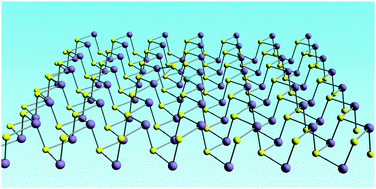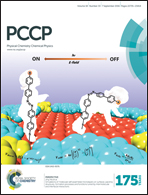Tunable electronic structures of germanium monochalcogenide nanosheets via light non-metallic atom functionalization: a first-principles study†
Abstract
Germanium monochalcogenides, i.e. GeS and GeSe sheets, are isoelectronic analogues of phosphorene, which have been synthesized in recent experiments (P. Ramasamy et al., J. Mater. Chem. C, 2016, 4, 479). Utilizing first-principles calculations, we have investigated their tunable electronic and magnetic properties via light non-metallic atom (B, C, N, O, Si, P, S) functionalization. We find that on these GeS and GeSe sheets O and S adatoms prefer to locate at the top site above the Ge atom, while the other ones like to occupy the anion site, which push the original S/Se atom to the hollow site instead. O and S adatoms slightly affect the semiconducting behaviour of the doped systems, while B, C, N, Si, P ones will drastically modify their band structures and induce versatile spintronic properties. Through the supercell calculations, B and C adatoms are found to induce a bipolar semiconducting behaviour in the decorated systems, while the N/P adatom will cause a spin-gapless-semiconducting/nearly-half-metallic feature in them. The B/C/N/Si/P-substituted GeS/GeSe sheet can be formed by removing the hollow-site S/Se atom from the adatom-decorated structures, which exhibit an opposite semiconducting/metallic behaviour to their phosphorene counterparts. A general odd–even rule is proposed for this phenomenon, which shows that an odd (even) number of valence electron difference between the substitution and host atoms would cause a metallic (semiconducting) feature in the substituted systems. Our study demonstrates that atom functionalization is an efficient way to tailor the properties of GeS and GeSe nanosheets, which have adaptable electronic properties for potential applications in nanoelectronics and spintronics.


 Please wait while we load your content...
Please wait while we load your content...